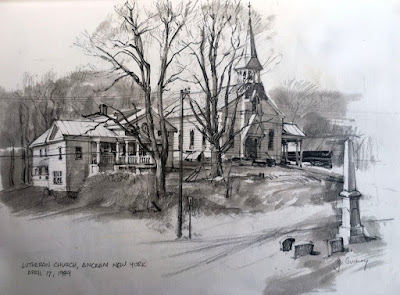Pollarding is the practice of cutting back the smaller branches of a tree to a certain point each time and allowing them to regrow for future harvest. Pollarded trees show up in plenty of historic paintings.
Pollard Willow at the Side of the Broo by Cornelis Vreedenburgh (1880-1946)Farmers would pollard willows to produce flexible rods; they'd cut back beeches to make charcoal; and they'd pollard hazels to produce nuts.
Emilio Sanchez-Perrier
It was practiced in Europe and Asia, and among the indigenous populations of the new world.
Pollarding was commonly practiced for tens of thousands of years until it fell mostly out of favor in the industrial revolution.

Vincent van Gogh
By allowing a tree trunk to grow up to the height of a standing person before it bears tender shoots, the shoots and leaves are above the browse line of deer, sheep and other animals.

Vincent van Gogh
The small branches can be cut back again to the same point after two, four, eight, or ten years, to be used for animal feed, firewood, tool handles, or building materials.
Sir George Clausen, The Return from the Fields
Many of us have assumed that this practice disfigures trees, but it's quite the opposite, providing reliable raw materials for people, and a healthy renewing cycle for the trees. A pollarded tree can potentially live for a thousand years.
William Fraser Garden, Willows on the Ouse
According to author and arborist William Bryant Logan, it's not only healthy for the trees, but it expands the environment for a variety of other plants and animals.

Pollarded Willows, 1887 by William Fraser Garden
Pollarding is still practiced in Europe, but it's less common in the USA.
The place you tend to find it these days is in cities, where trees receive more attentive care than they do in the untended forests.

L. Birge Harrison November
Coppicing is a similar idea, except that the trees are cut back close to the ground rather than at head-height.

Ivan Shishkin, Coppice (Noon) 1872
 If you're interested in this topic, I recommend the book: Sprout Lands: Tending the Endless Gift of Trees by William Bryant Logan, which is beautifully written and full of fascinating information.
If you're interested in this topic, I recommend the book: Sprout Lands: Tending the Endless Gift of Trees by William Bryant Logan, which is beautifully written and full of fascinating information.
----
Previous post on William Fraser Garden





























































